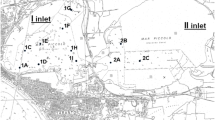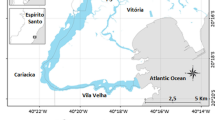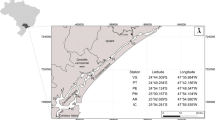Abstract
The study assessed the occurrence, possible toxicity, and impact of sediment-associated metals and PCBs in the coastal zone of the southern North Sea using echinoderms as representatives of the macrobenthos. Metals and PCBs were analyzed in the sediments and in the body compartments of the starfish Asterias rubens from 11 stations. The general toxicity of sediment-associated contaminants was assessed by bioassays using embryonic and larval developments of both A. rubens and the sea urchin Psammechinus miliaris. The impact of contamination was assessed by measuring cellular immune responses of A. rubens collected in the same stations.
Contamination of the starfish by metals and PCBs closely reflected that of the sediments. However, bioaccumulation was element-specific for metals and depended on the chlorination pattern for PCBs. The sediment-associated contaminants appeared to be toxic in both the A. rubens and P. miliaris developmental assays. Moreover, metals were shown to affect the immune responses of starfishes living in contaminated stations. The most significant effects on biological responses were recorded in the plumes of the Scheldt/Rhine/North Sea Canal and the Elbe/Weser Rivers.
Similar content being viewed by others
Author information
Authors and Affiliations
Rights and permissions
About this article
Cite this article
Coteur, ., Gosselin, ., Wantier, . et al. Echinoderms as Bioindicators, Bioassays, and Impact Assessment Tools of Sediment-Associated Metals and PCBs in the North Sea. Arch Environ Contam Toxicol 45, 190–202 (2003). https://doi.org/10.1007/s00244-003-0199-x
Issue Date:
DOI: https://doi.org/10.1007/s00244-003-0199-x




